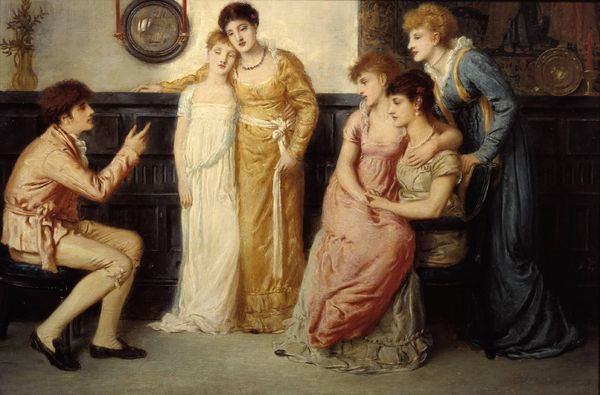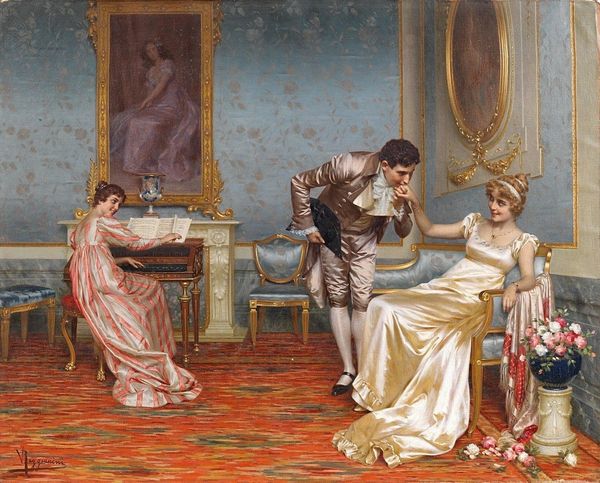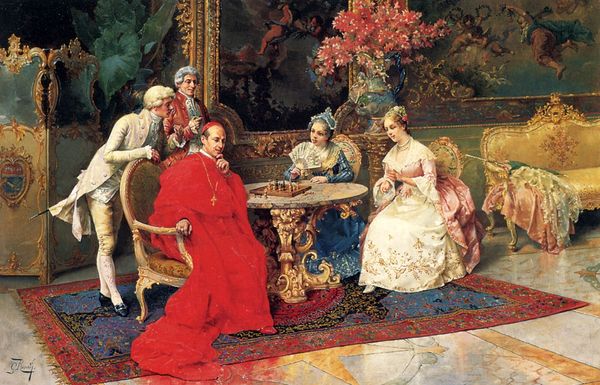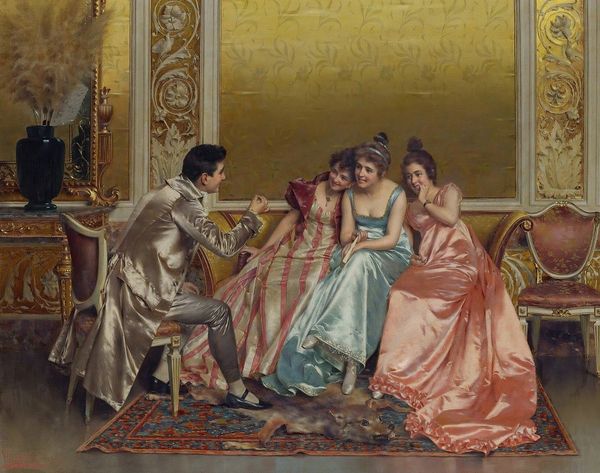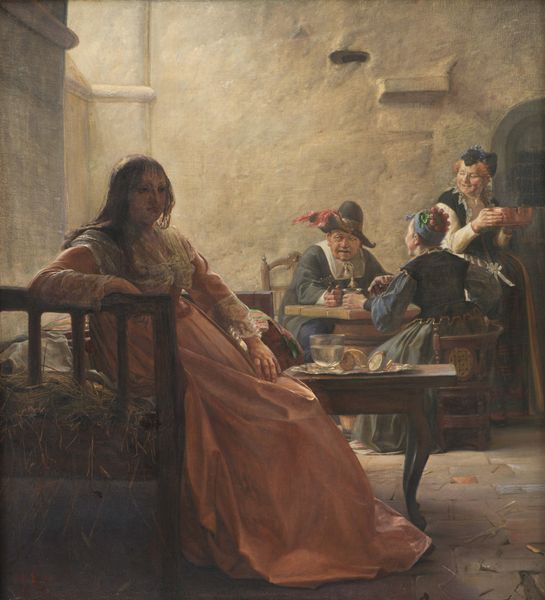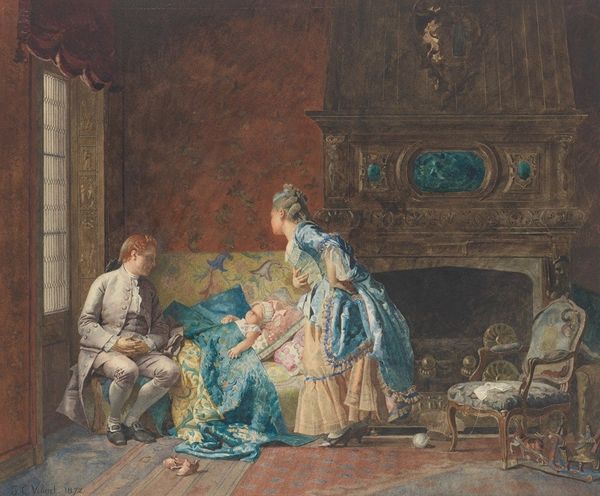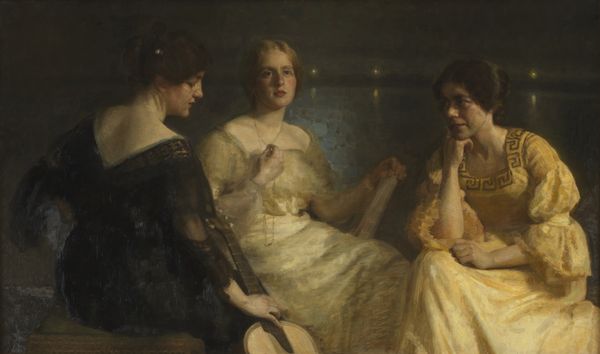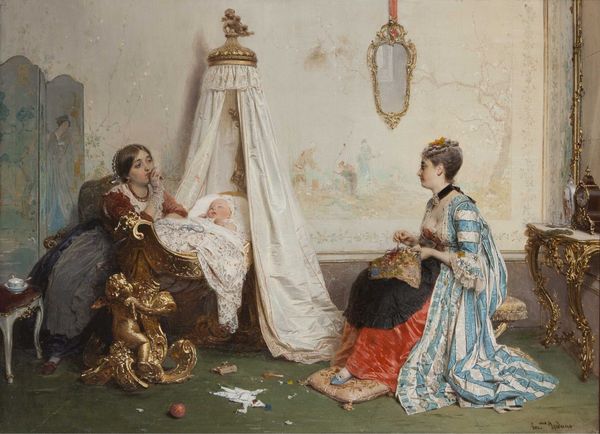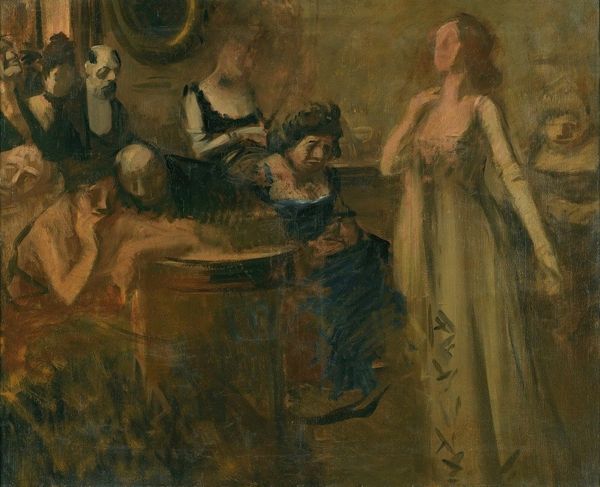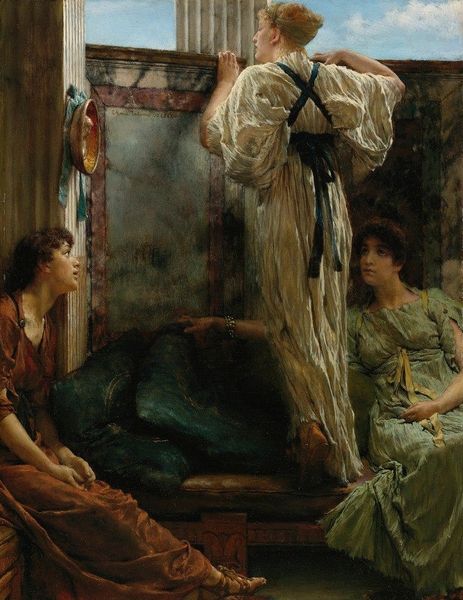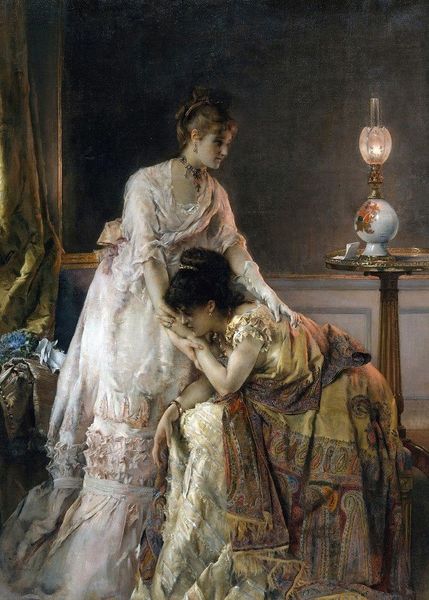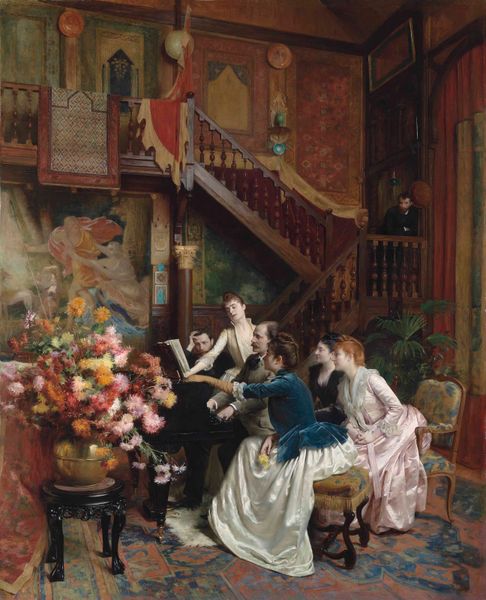
Copyright: Public domain
Curator: This is Francesc Masriera’s “Una melodia de Schubert,” painted in 1896. We see an interior scene, seemingly during a musical recital, rendered in oil. Editor: Oh, it’s dreamy! The light, those almost-monochromatic pastel dresses, the languid poses… like a fleeting memory of a summer afternoon. Curator: Masriera's use of oil is fascinating here. He seems to deliberately obscure details, favoring atmosphere. Consider how this relates to the broader social context—the rise of photography and its challenge to painting's mimetic function. Painting turned inward. Editor: I see that. It’s less about precision and more about capturing an emotional mood. And those dresses, they seem almost to shimmer. I wonder what kind of fabric they're made of to catch light in that way, perhaps silk or satin. It's quite theatrical. Curator: Indeed. The materiality is carefully considered to evoke a specific lifestyle of leisure and affluence. The very act of playing music within a domestic setting became a form of social currency. Editor: Absolutely. The scene reeks of privilege. All this soft light, fancy attire…I find myself almost resenting it, and yet...there's an undeniable appeal. You almost want to sink into that plush armchair and join them. It is a very complex response, at least for me. Curator: And note the almost performative aspect – not just the act of playing, but also of listening. These women are deliberately composed, each striking a pose for observation and potentially admiration. It touches on a theme of gender and spectatorship common at the time. Editor: I can almost hear the music…or maybe imagine a slightly out-of-tune melody drifting through the air. The violinist almost fades against the wall. It’s not quite background noise. Perhaps they had trouble sourcing adequate musical accompaniment? I jest of course...sort of! Curator: Or maybe Masriera, in obscuring her, is commenting on the instrumentalisation of women in such social gatherings – their purpose secondary to mere display and passive receptivity to the domestic ideology of the late nineteenth century? Editor: A sombre observation, that makes a lot of sense! Anyway...looking closer and knowing all that adds a definite edge to this piece that I find compelling. Curator: Exactly. By attending to the painting’s making and broader historical factors we are invited to think critically.
Comments
No comments
Be the first to comment and join the conversation on the ultimate creative platform.
